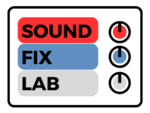Mastering is the final stage in music production, where the magic happens and a mix is transformed into a polished, professional sound. One important tool in the mastering engineer’s arsenal is the equalizer, commonly known as EQ. In this article, we will explore the role of EQ in the mastering phase, discuss different types of EQs, delve into the linear phase EQ debate, provide genre-specific insights, and offer guidelines for achieving a balanced mix.
Understanding EQ in Mastering
Equalization allows us to shape the tonal balance of a mix, emphasizing or attenuating specific frequencies to enhance clarity, depth, and cohesion. In the mastering phase, EQ is primarily used to address frequency imbalances, refine tonal characteristics, and ensure that the mix translates well across different playback systems.
Types of EQs for Mastering
When it comes to EQs, there are two primary types: analog and digital. Analog EQs, often hardware devices, provide a warm and characterful sound, imparting a pleasing coloration to the audio. On the other hand, digital EQs, available as software plugins, offer precise control and flexibility. In the digital realm, parametric EQs are commonly used for mastering due to their ability to adjust specific frequencies with precision.
Linear Phase EQ: To Use or Not to Use?
Linear phase EQs have gained popularity in recent years due to their ability to maintain phase relationships between different frequencies. This means that when applying EQ, the timing and phase relationships of the audio are preserved, resulting in minimal phase distortion. However, linear phase EQs can introduce pre-ringing artifacts, which may be audible in certain situations. The decision to use a linear phase EQ should be based on the specific needs of the mix and the desired tonal characteristics.
Genre-Specific EQ Considerations
Different music genres have distinct tonal characteristics and instrumentations. When mastering, it is crucial to consider these genre-specific nuances to achieve the desired sonic impact. For example:
- In electronic music, precise control over the low-end is essential to maintain a powerful and tight bass foundation.
- Rock and metal genres often benefit from a balanced midrange, allowing guitars and vocals to cut through the mix.
- Jazz and classical music may require a more transparent and natural sound representation, retaining the acoustic qualities of the instruments.
Achieving a Balanced Mix
Determining the final balance of a mix is a critical aspect of mastering. While artistic preferences and subjective judgment play a role, there are some general guidelines and rules of thumb:
- Aim to maintain a consistent perceived loudness across the frequency spectrum.
- Avoid excessive boosts or cuts in specific frequency ranges, as this can lead to an unnatural or unbalanced sound.
- Pay close attention to the low end. While there are no strict rules about specific dB levels, it is generally recommended to prevent the low end from overwhelming the rest of the mix.
- Cutting frequencies below 20Hz is often done to remove inaudible, subsonic rumble and unnecessary energy that can potentially affect the overall headroom.
Mastering is an art that requires a delicate touch and a keen ear. EQ is a powerful tool in the mastering engineer’s toolkit, allowing for tonal shaping, frequency balancing, and enhancing the overall sonic experience. The choice of EQ type, such as analog or digital, and the decision to use linear phase EQ depends on the specific requirements of the mix. By considering genre-specific nuances and adhering to guidelines for achieving a balanced mix, you can elevate your mastering skills and create professional-sounding music.



